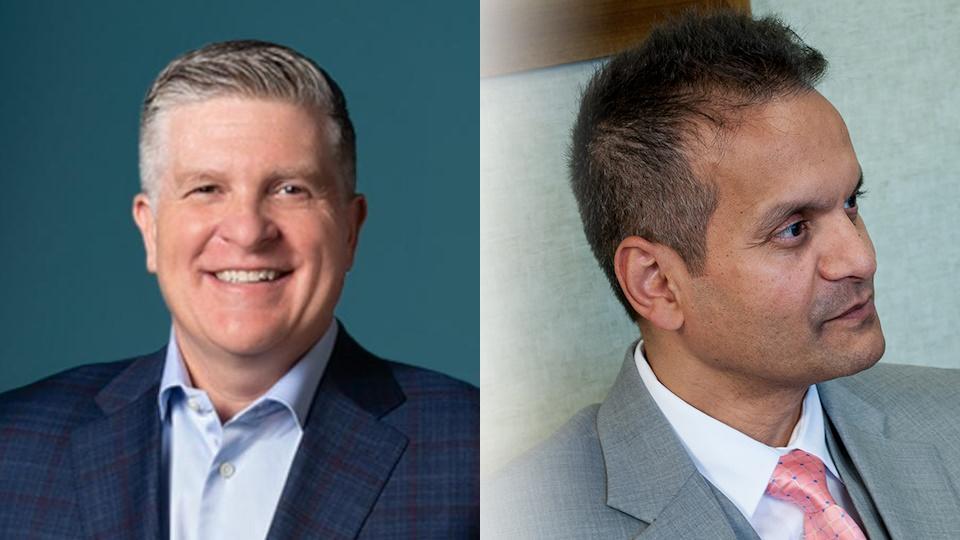Inclusive research and tackling health inequalities

Health inequalities are a long-term condition and inclusive research is the only disease modifying therapy in the pipeline – but how can the community drive practical change? Amanda Barrell reports from the National Institute for Health Research’s (NIHR) virtual Academy Members' Conference.
Only through making research more inclusive can we tackle the scourge of health inequalities and build a “more cohesive society”.
That’s according to Professor Azhar Farooqi, GP and director of the Centre for BME Health in Leicester, who gave the keynote address at the National Institute for Health Research’s (NIHR) virtual Academy Members' Conference last week.
“Unfortunately, health inequality is a chronic long-term condition of the NHS,” he said. “And COVID-19 is an acute exacerbation of that.”
That the pandemic has disproportionally affected people from black, and minority ethnic (BME) backgrounds has been well documented. Mortality has been linked to age, gender, and ethnicity, with black and South Asian people being more likely to develop severe disease or die from the infection.
But COVID-19 has but lifted the lid on a decades-old problem that has been discussed since the Black report of 1980.
More recently, the second Marmot report, published just weeks before the onslaught of SARS-CoV-2, found that people living in England’s poorest neighbourhoods die, on average, seven years earlier than those in the richest.
“We know there are great health inequalities in this country, and if we don't have good research evidence about managing disease and providing services (in different groups) we're not going to help with that.
“The mission of the NIHR is to improve the health and wealth of the nation… and by that they mean the entire country: every citizen, not just some of them,” said Prof Farooqi.
Ethnic diversity
Currently, many studies do not record the ethnicity of their participants, and those that do tend to have disproportionally low numbers of people from diverse backgrounds.
Prof Farooqi’s team looked at more than 1,500 UK trials and found that just six formally recorded ethnicity. This contrasts with the approach in the United States where this information is collected “almost routinely”.
“What they have shown is that if you are a Black American, you are much less likely to be included in clinical trials. For example, Black Americans are only 5% of cancer trial recruits, compared to something like 13% of the population.”
Study participants should reflect the population likely to be affected by the condition under investigation, he explained, pointing to a review of 12 UK diabetes trials.
“Diabetes is much more common in South Asian communities by a factor of three, for example. But when you look at the studies that do record ethnicity, representation is lower than even the population percentage, let alone the percentage actually affected by the condition.”
This wide-ranging problem has a huge impact, creating gaps and inequalities both in clinical outcomes and on access to services.
“We have to recognise that communities are different,” said Prof Farooqi, adding that some drugs work differently in various groups, and that perceptions on access to services differ among communities.
“It is really important that we include all communities in drug research so we have the right evidence that we can apply to the right communities. The same applies to access to healthcare. If we don‘t have the evidence base then we can’t develop services that cater for the entire population.”
Making a change
Explaining how research could be made more inclusive, Prof Farooqi said there were four main areas that needed to be addressed, and that progress was ongoing.
“The first is leadership. Systems deliver the outcomes they are designed to, or they have evolved to deliver…Funding is also clearly an issue, as sometimes it is harder work to get excluded communities or excluded populations into your study.
“Researcher factors are important, too, and that is predominantly about the right support and training. Researchers do not want to be exclusive, but sometimes the pressures we're under make us work in a less inclusive way.
“Finally, I think we need to work with our communities. We need to engage and do research with them, rather than to them.”
He explained that the NIHR had established an Equality, Diversity, and Inclusion (EDI) Group, and had reviewed the data collection requirements of clinical trials, though the “ink isn’t dry” on the outcome yet. The organisation is also promoting EDI in training and leadership development.
It has also developed a range of resources, including the evidence-based Ethnicity Inclusion framework and the BME Toolkit, to help researchers embed representation into routine processes.
“We need to give people the tools and training to be as inclusive as possible, because we know research in excluded communities is sometimes more difficult. Geography, language, or cultures can be different and may require different methodologies.”
Cohesive society
Ultimately, more needs to be done to ensure research is inclusive, and the whole of society stands to benefit, said Prof Farooqi.
“If we do... our research capital in the UK will be greater, we will reach greater research capacity, and research outputs will be better. Consequently, the opportunities to reduce health inequalities will be far greater.
“If we do address this issue of inequality and inclusion in research, I think it's going to make us a more cohesive society,” he concluded.
About the Author
Amanda Barrell is a health and medical education journalist, editor and copywriter. She has worked on projects for pharma, charities and agencies, and has written extensively for patients, healthcare professionals and the general public.












